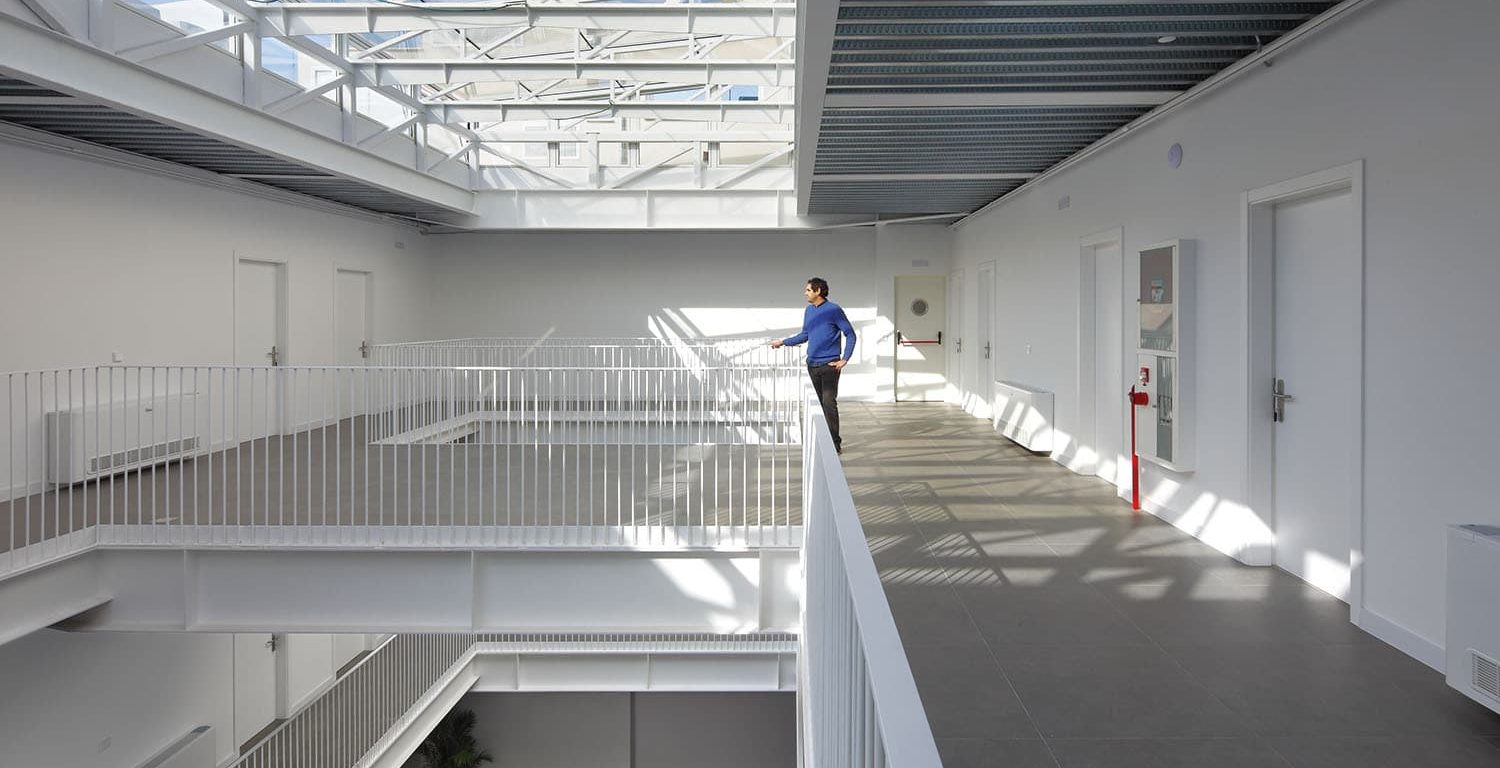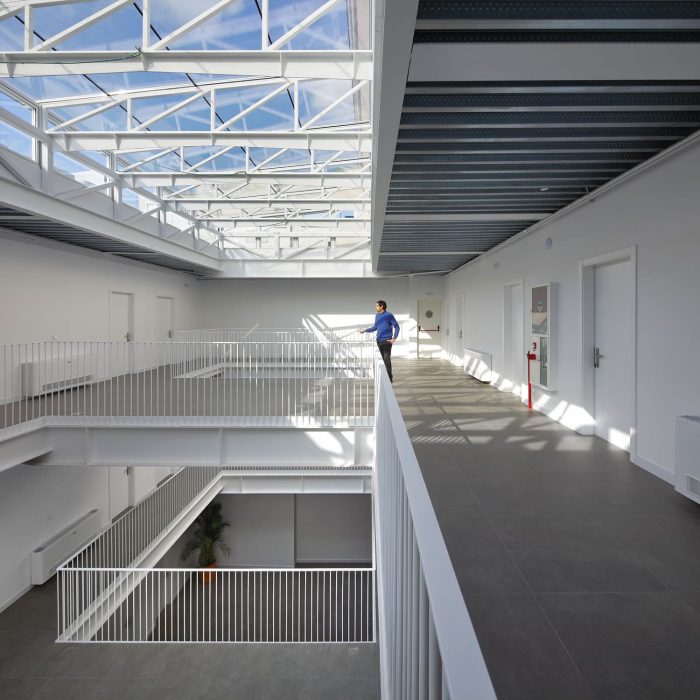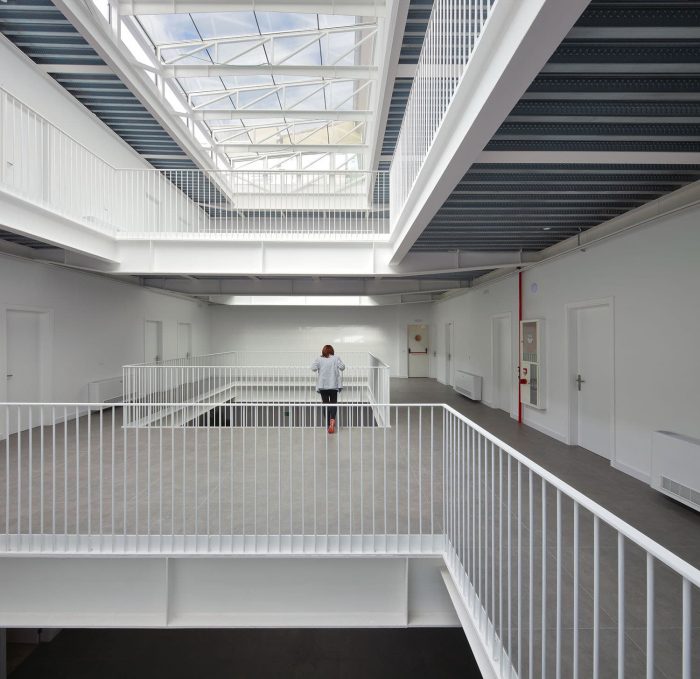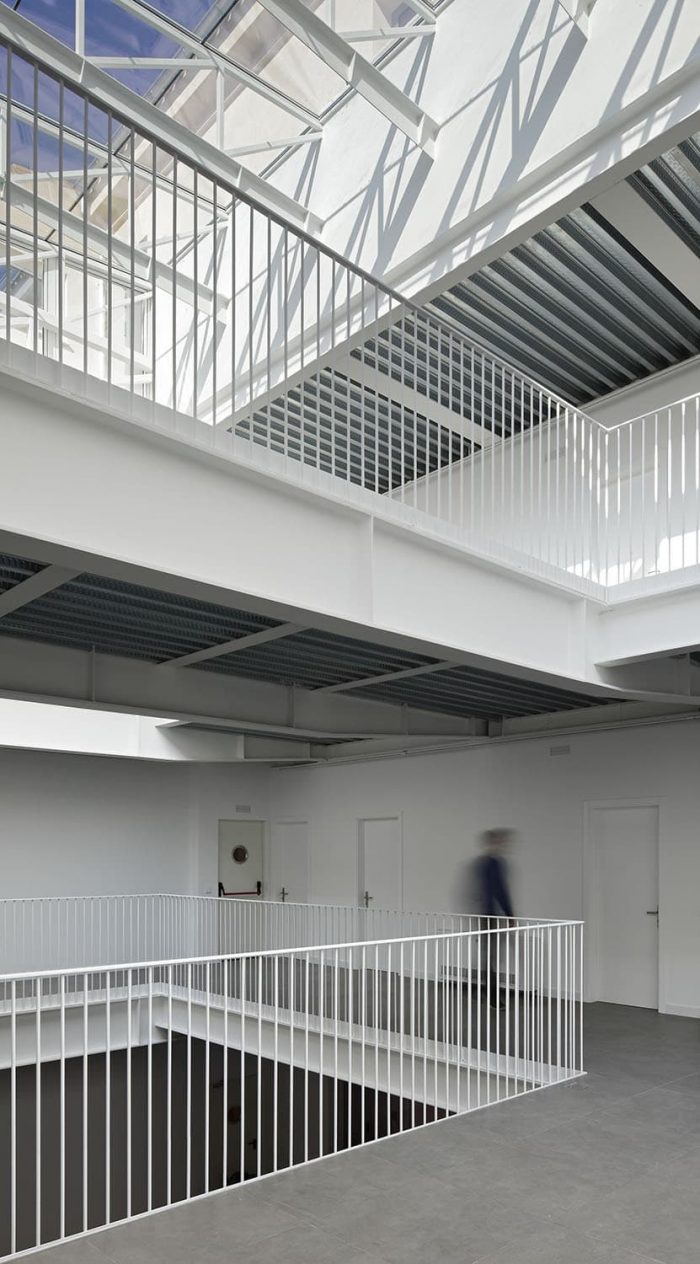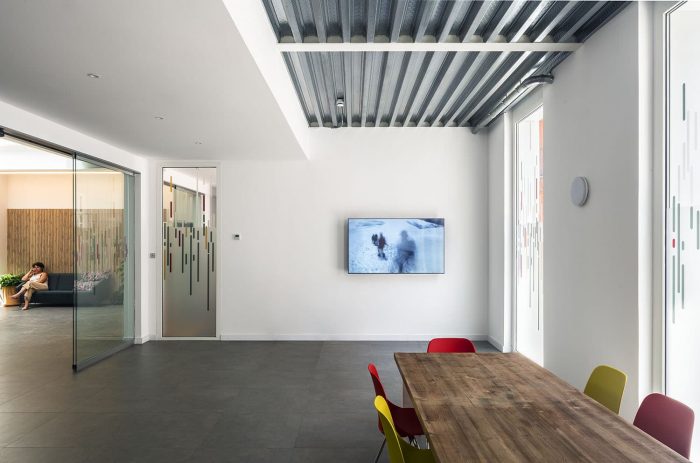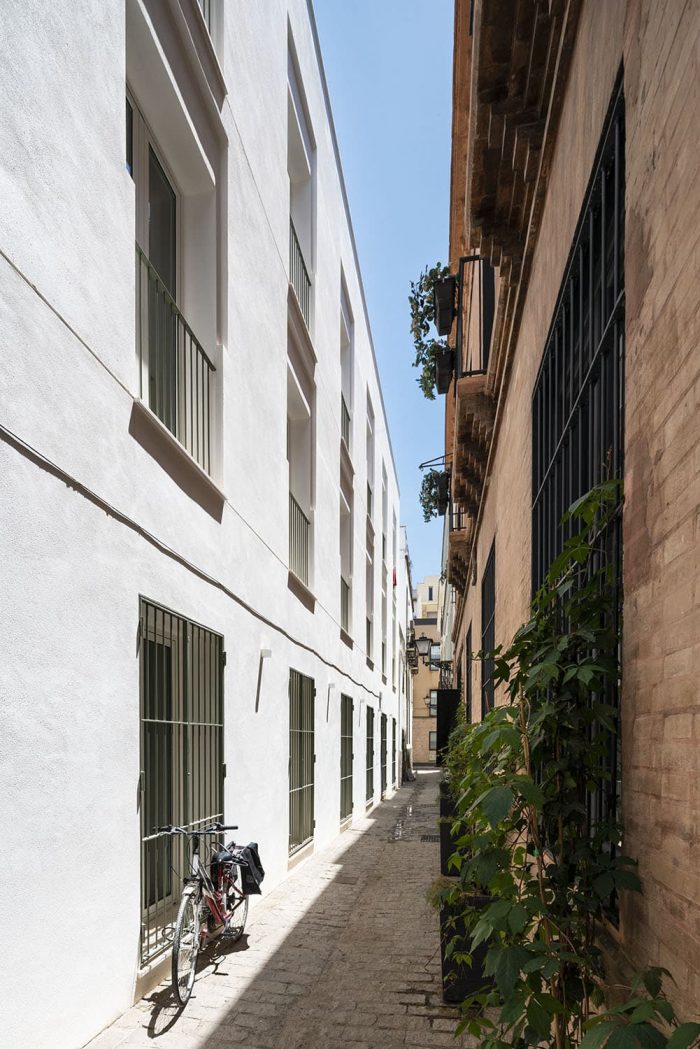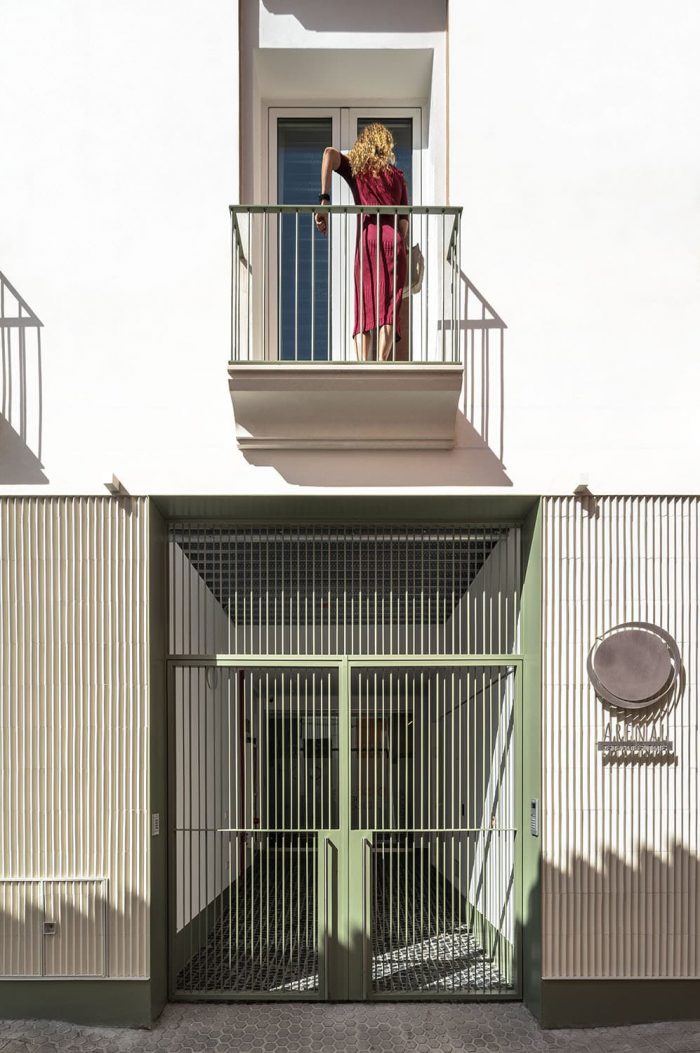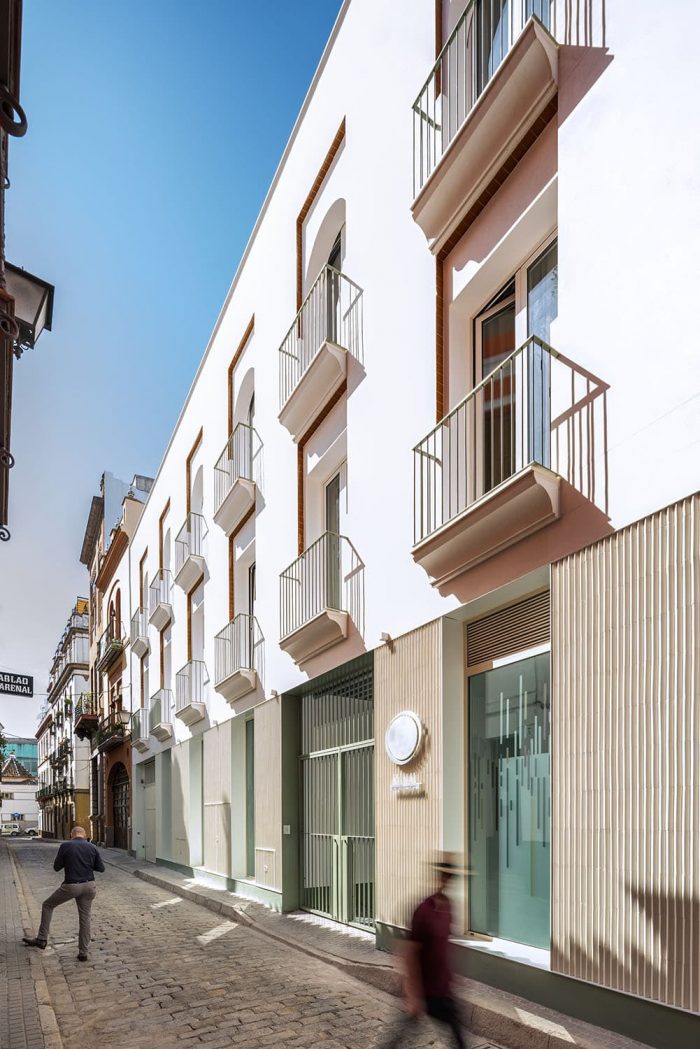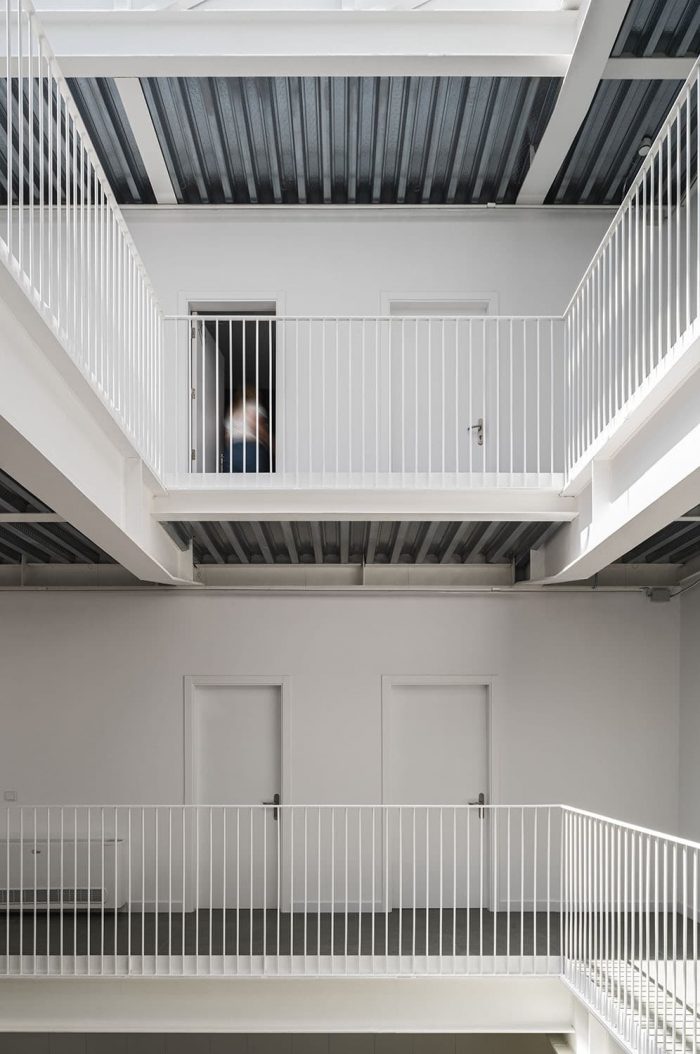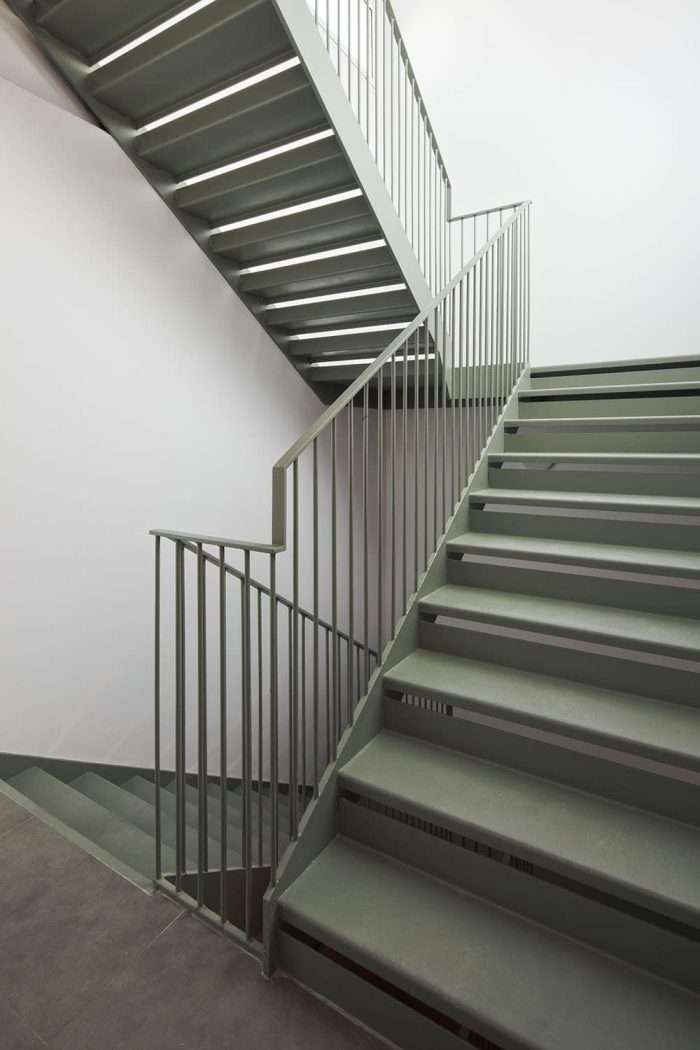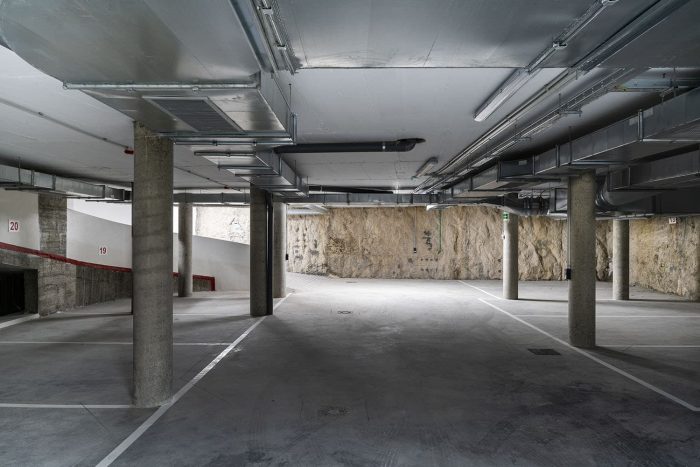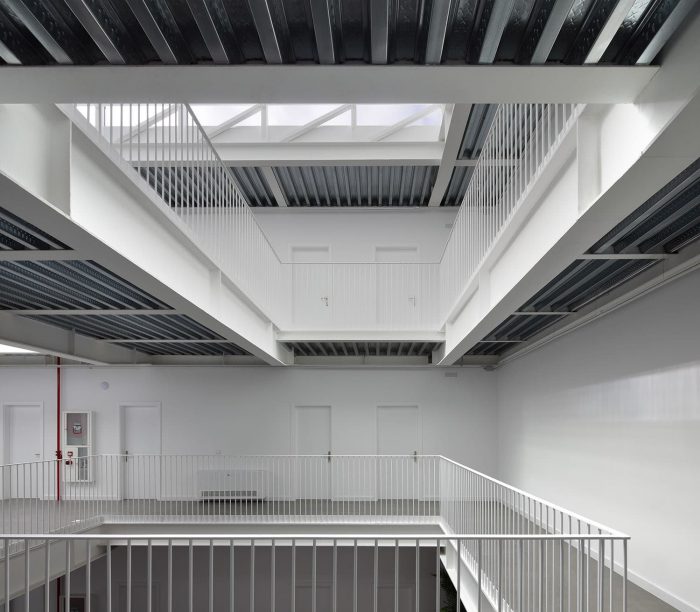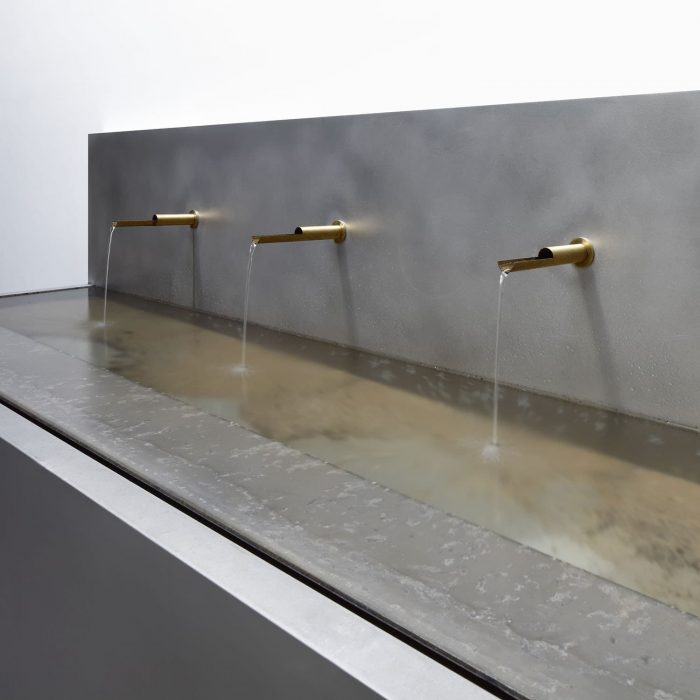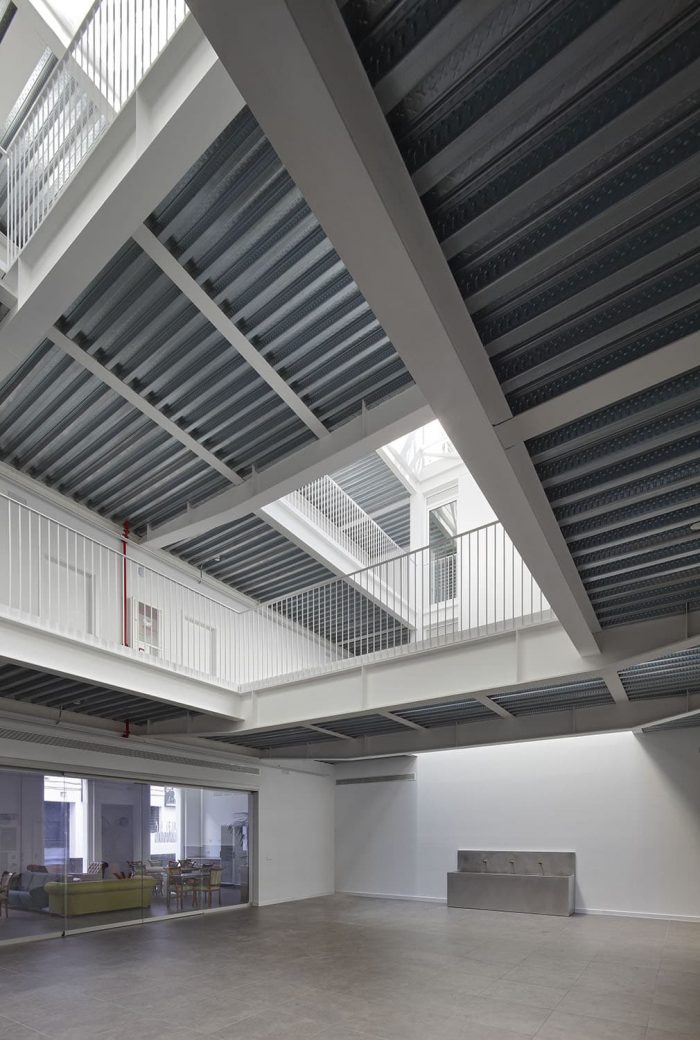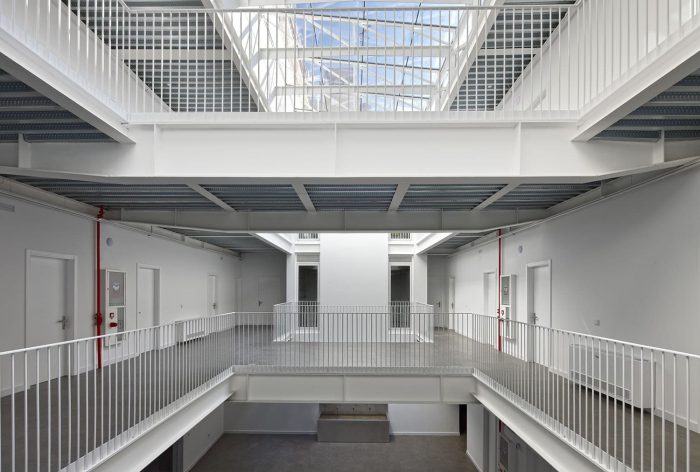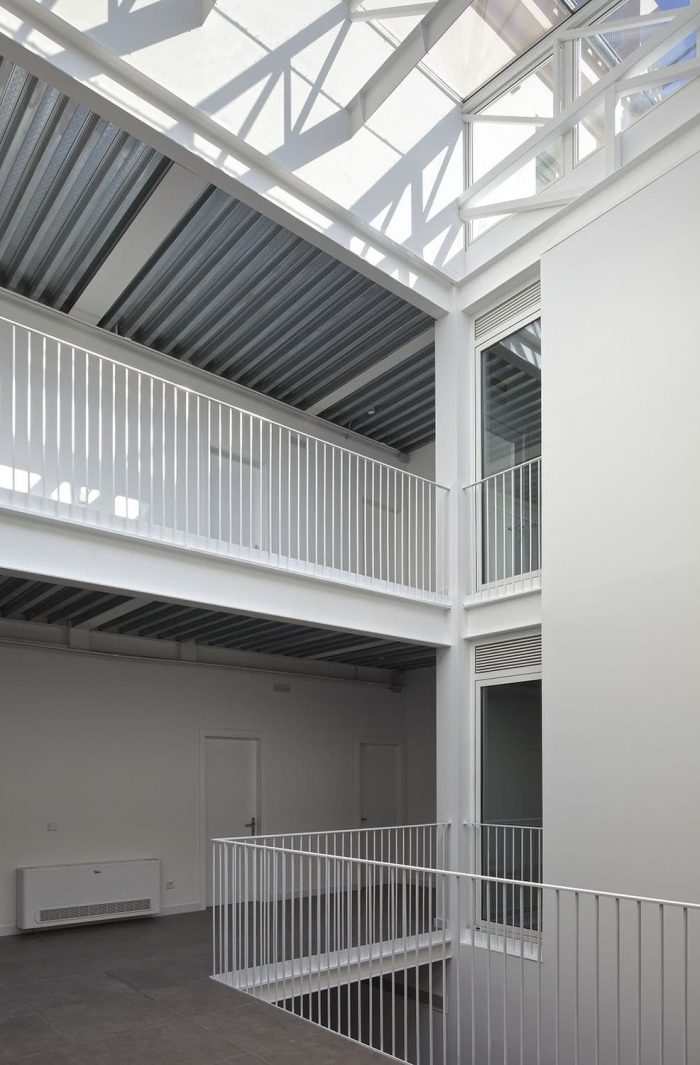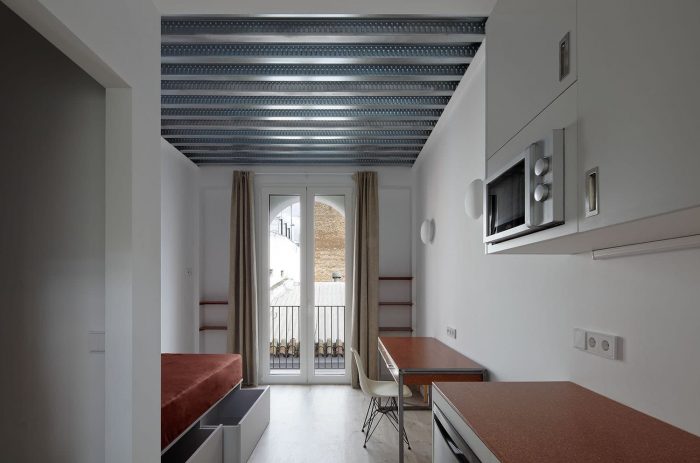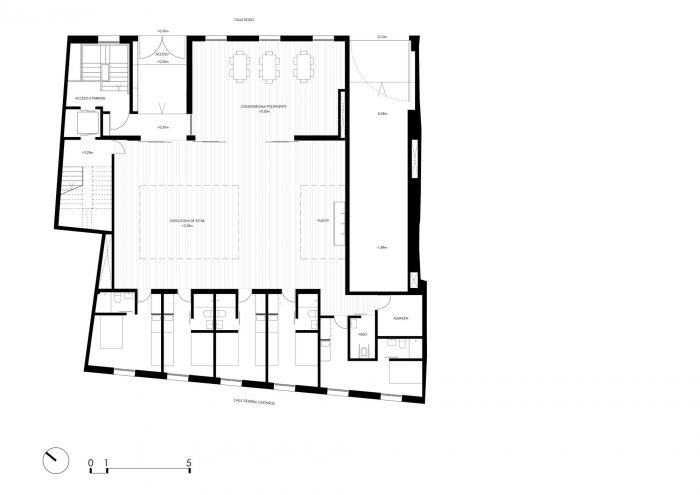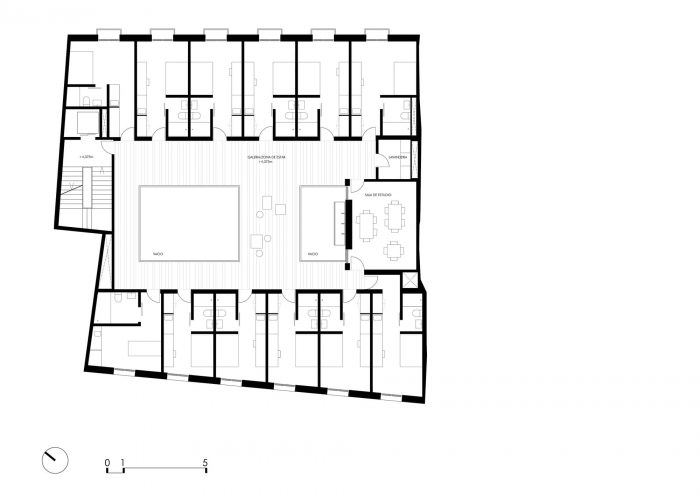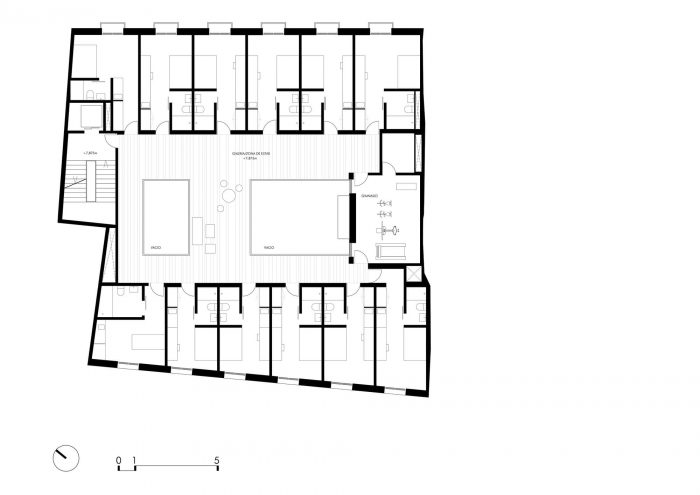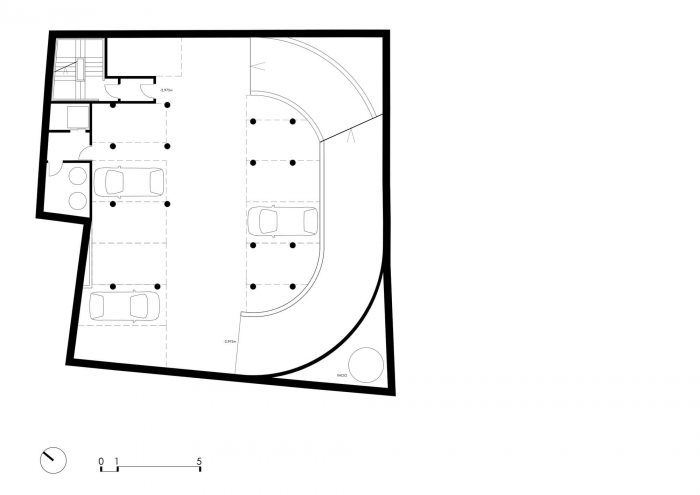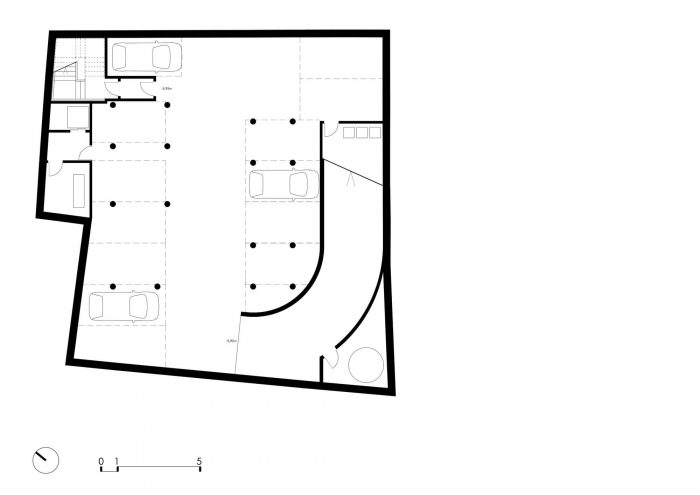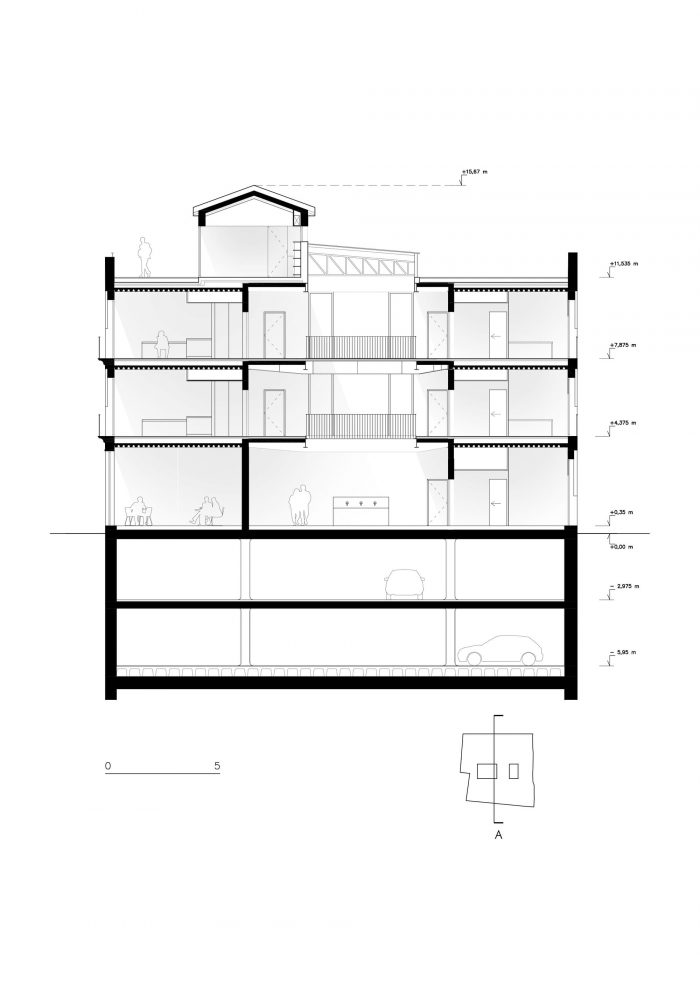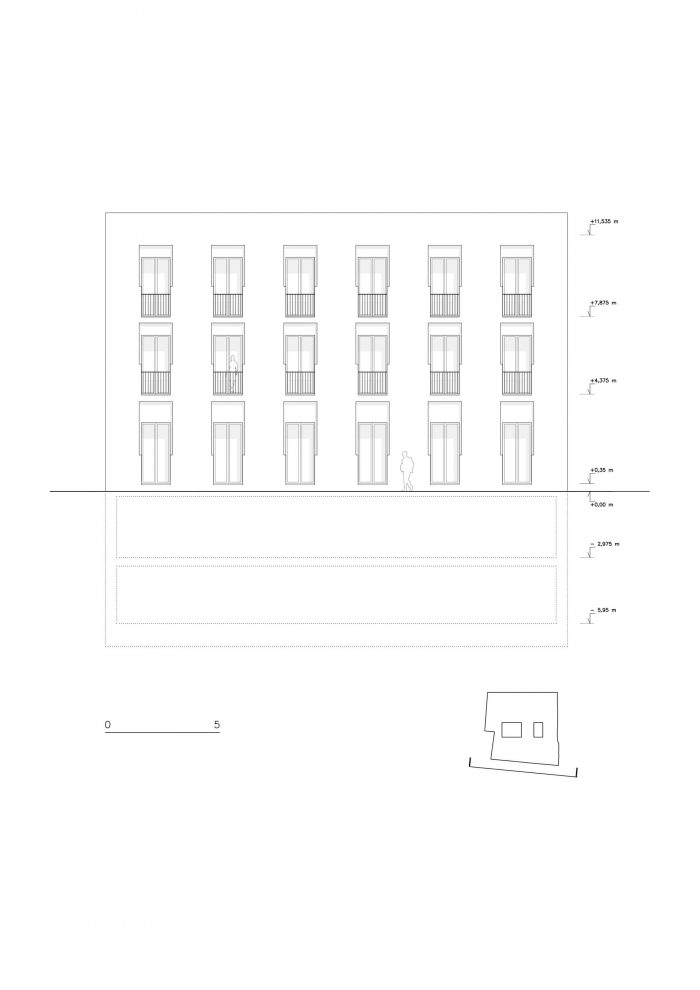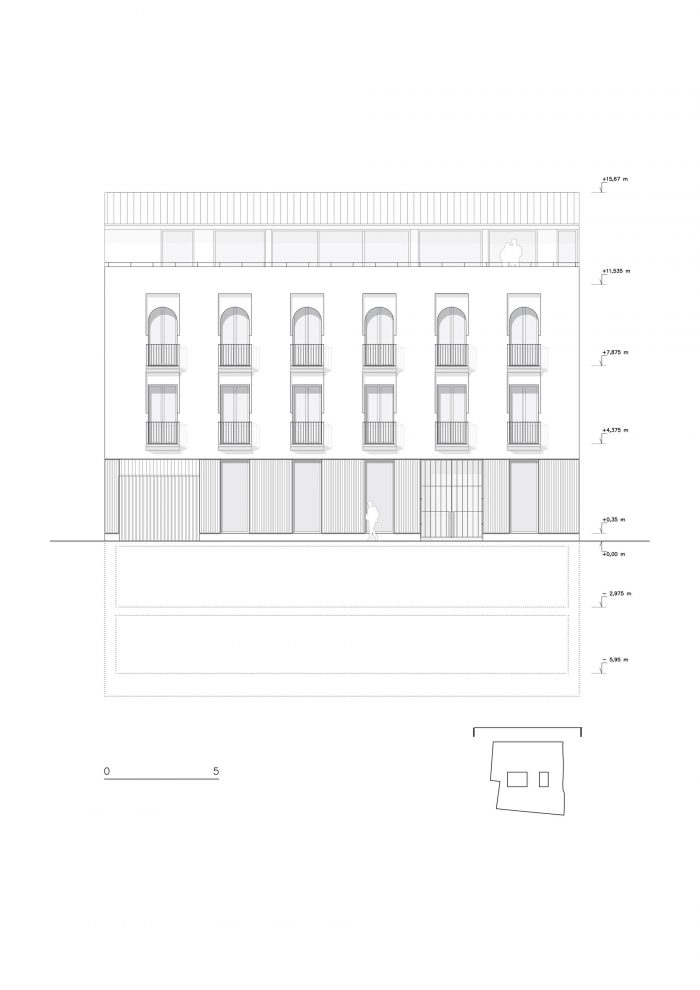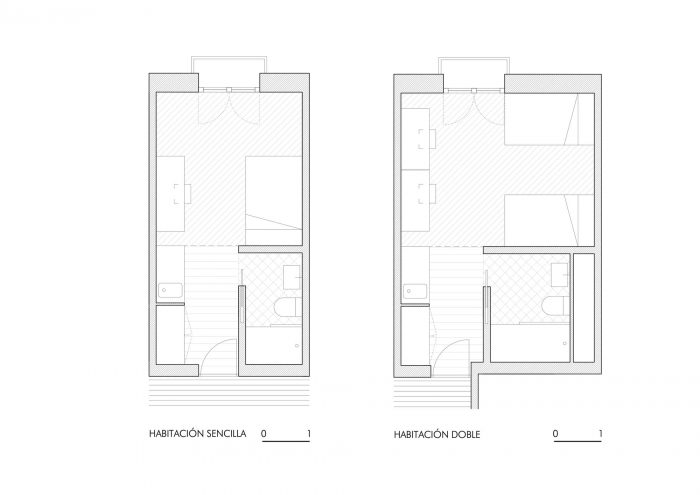该建筑位于阿雷纳尔(Arenal)社区,这是一个由狭长的街道组成的迷宫,就在历史城市的外面,在大教堂和瓜达尔基维尔河之间。这个地方靠近中世纪的阿塔拉萨纳斯(Atarazanas)和马埃斯兰萨斗牛场(Maestranza Bullring),以前是一个古老的铸造厂和铁器仓库的一部分,用于生产地区性的美学铁器。面对罗多街和一个更窄的小后巷,该场地被相邻建筑的党墙横向接壤。
The building is located in the Arenal neighborhood, a maze of long, narrow streets right outside the historical city and halfway between the Cathedral and the Guadalquivir River. The site is near the medieval Atarazanas and the Maestranza Bullring, in an area that was formerly part of an old foundry and iron warehouse for regional aesthetic ironwork. Facing Rodo street and an even narrower small back alleyway, the site is bordered laterally by party walls of adjoining buildings.
在外部,该建筑与周围的传统建筑进行了对话,将新的当代建筑与场地的历史记忆相融合。它没有诉诸于模仿或当前的破坏性趋势,相反,该项目与环境对话,尊重地与附近的历史特征互动,通过现代和动态的语言重新解释其带有加长的开口和小阳台的传统外墙。
On the outside, the building engages in a dialogue with the traditional architecture surrounding it, blending new contemporary architecture with the historic memory of the site. It does so without resorting to mimicry or current disruptive trends, instead, the project converses with the environment, respectfully interacting with the historic character of the neighborhood, reinterpreting its traditional facades with lengthened openings and small balconies through a contemporary and dynamic language.
考虑到街道的狭窄性,立面的设计不仅要从正面欣赏,还要从侧面欣赏。该项目的横向和倾斜的视野变得至关重要,纳入了一个新的设计和质量,由传统和可持续的材料支持,如石灰砂浆、釉面陶瓷和阳台和酒吧的油漆铁制品。外墙以白色为主,加入了凹陷的釉面砖所带来的一抹色彩,这些釉面砖框住了开口处。这种简单的定义姿态,即凹陷上层楼的开口,扩大了它们的存在,使它们从背景中脱颖而出。
With the narrowness of the streets in mind, the facade is conceived to be appreciated not only head but also from the sides. The lateral and skewed vision of the project becomes essential, incorporating a new design and quality supported by traditional and sustainable materials such as lime mortar, glazed ceramics, and painted ironwork for balconies and bars. The predominant white of the facade incorporates a touch of color brought by the recessed glazed tiles which frame the openings. This simple defining gesture, recessing the openings of the upper floors, expands their presence and makes them stand out from the background.
一旦进入建筑,空间就围绕着一个中央庭院组织,这是建筑的主导元素。院子被一个轻盈的透明玻璃天窗所覆盖,垂直穿过所有楼层,用阳光照射建筑的中心。自然光以这种方式成为构建一个流动的、连续的、亲密的、内向的内部空间的主要动力。这个庭院沐浴在光线中,在喷泉的淙淙声中得到舒缓,是一个平静祥和的地方,成为学生享受的聚会场所。
Once inside the building, the space is organized around a central courtyard, the leading element of the building. Covered by a light, transparent-glass skylight, the courtyard vertically transits all the floors, flooding the heart of the building with sunlight. Natural light in this way becomes the main driver in the construction of a fluid and continuous, intimate, and introverted, interior space. This courtyard, bathed in light and soothed by the murmur of the fountain, is a calm and peaceful place that becomes the meeting ground for the enjoyment of the students.
这个庭院不仅是底层的消磨时间的地方,而且还纳入了两条连接空间的大型走道,而周边的长廊则设计得很宽阔。通过这种方式,提供广泛用途的新空间出现了,它们可以成为聚会和休闲的场所,也可以成为交通的路径。
This courtyard is not only a place to spend time on the ground floor but also incorporates two large walkways bridging the space, while the perimeter galleries are designed with a generous width. In this manner, new spaces offering a wide range of uses emerge, which can become places of meeting and leisure as well as paths of transit.
底层平面的长方形几何形状呈现出两条向街道开放的房间走廊。与相邻墙体相邻的一侧聚集了垂直循环元素,另一侧则是共用的场所,如学习室、健身房或洗衣房。
The rectangular geometry of the ground floor plan presents two corridors of rooms open to the street. One side adjacent to the adjoining walls gathers vertical circulation elements and another is devoted to shared-use premises such as the study room, the gym, or the laundry.
该建筑呈现出一种暴露的金属结构,其中支柱和折叠板的轻质板界定和组织不同的空间。所有的结构元素都被涂成白色,除了镀锌钢板的折叠板,这些折叠板保留了它们的自然颜色,给天花板带来了明亮、闪耀的品质。
The building presents an exposed metallic structure where pillars and lightweight slabs of folded plates define and organize the different spaces. All the structural elements are painted in white except for the galvanized-steel folded plates of the slabs, which preserve their natural color and give a bright, shining quality to the ceilings.
住宅的组织遵循塞维利亚住宅的传统类型:入口大厅-庭院房间。在这种方式下,住宅,过滤空间与双围墙系统(栅栏门和玻璃门),成为一个有效的溶剂温度调节器,与玻璃天窗的窗户一起作用。
The organization of the residence follows the traditional typology of the Sevillian house: entrance hall-courtyard rooms. In this manner, the residence, filtering space with a double enclosure system (barred gate and glass door), becomes an efficient solvent temperature regulator acting along with the windows of the glass skylight.
该建筑实现了最大的能源效率,而没有诉诸于太复杂的主动气候控制系统或太昂贵的机器。相反,它使用了建立在传统和记忆基础上的被动程序—有时还进行了改进和更新。这些程序包括:形式的适宜性、自然通风、充分的阳光控制、自然光、封闭/玻璃表面的充分关系、空气热能系统的使用、植物灌溉的雨水收集以及集中的温度控制系统。
The building achieves maximum energy efficiency without resorting to either too sophisticated active systems of climate control or too expensive machinery. Instead, it uses passive procedures well-founded in tradition and memory – sometimes refined and brought up to date. These procedures are, amongst others: the suitability of form, natural ventilation, adequate sun control, natural light, the adequate relationship of closed/glassed surfaces, the use of aerothermal systems, rainwater collection for plant irrigation, and a centralized temperature control system.
Architects: Garcia & Melero Arquitectos
Area : 2184 m²
Year : 2022
Photographs :Pablo Diaz Fierros
Lead Architects : Eduardo Melero Rada, Ignacio García Carrasco
Technical Architect : Pablo Trujillo
Collaborators : Eoghan O’Connor, Eoghan Mc Cague
Structure : David Villegas
Installations : Álvaro Gayán. TEP Ingenieros
Metalwork : Gmetal
Builder : Operum Sevilla
Developer : Suresa Chaparro
City : Sevilla
Country : Spain

